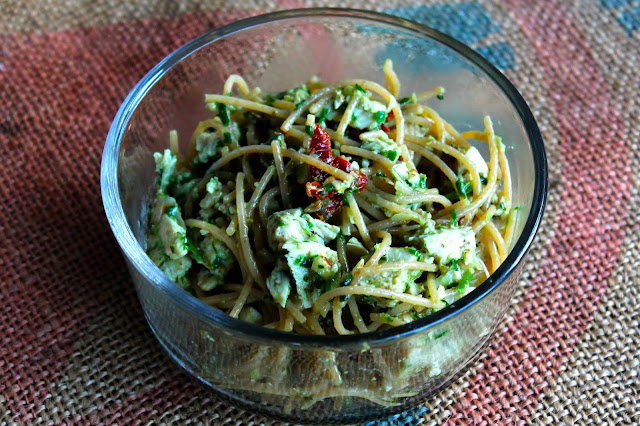If you read my Adventures of a Wannabe Fermento post, then you may already be familiar with the many benefits of wild-fermented foods. If not, here is a quick recap: they are rich in digestive enzymes and probiotics; they produce a complex of B vitamins and vitamin K; they preserve the vitamins already present in the vegetables such as Vitamin C; they improve digestive health; they treat a variety of digestive disorders; they help prevent certain types of cancer; and they strengthen our overall immunity. The wild ramp season is nearly over in my region, but pickling is a great way to extend the season and really make the most of vegetables when they are in season. Especially when it is a vegetable like a ramp that nature provides without any planting or cultivating on my part. I harvested one last batch so that I could try wild fermenting them in a brine pickling solution. Rather than use the large fermentation crock I used for my sauerkraut, I will use a handy little invention called the Perfect Pickler that my Aunt Janet sent to me. It is a quick, inexpensive, and easy way to turn a regular canning jar into a hydroponic, wild fermenting, pickling machine.
To pickle a batch of ramps, I first harvested them, cleaned them well, trimmed the roots and all but an inch of the greens. Then, I placed them into a clean, quart-sized canning jar and followed the simple instructions in the Perfect Pickler manual:
Brine Pickled Ramps
20-30 ramps
2 Tbsp unrefined, additive-free sea salt
4 cups of bottled spring water or distilled water
Quart canning jar
spices of your choice
 First make the brine by combining the salt with the water. It is really important to use unrefined, additive-free salt since table salt contains additives like iodine and anti-caking agents that will effect the pickling culture. It is also really important to use bottled spring water or distilled water since chlorine, trace antibiotics, and antibacterial soap residues are present in tap water. Well water is fine as long as it is not too hard or too soft, but keep in mind that the minerals present in well water may also effect the culture. I used the Real Salt sample that came with my Perfect Pickler since it is unrefined, non-iodized, and contains over 70 different minerals. I also chose to add about a teaspoon of whole black peppercorns, a teaspoon of whole coriander, 1/4 teaspoon of crushed red pepper flakes, and a bay leaf for some added flavor.
First make the brine by combining the salt with the water. It is really important to use unrefined, additive-free salt since table salt contains additives like iodine and anti-caking agents that will effect the pickling culture. It is also really important to use bottled spring water or distilled water since chlorine, trace antibiotics, and antibacterial soap residues are present in tap water. Well water is fine as long as it is not too hard or too soft, but keep in mind that the minerals present in well water may also effect the culture. I used the Real Salt sample that came with my Perfect Pickler since it is unrefined, non-iodized, and contains over 70 different minerals. I also chose to add about a teaspoon of whole black peppercorns, a teaspoon of whole coriander, 1/4 teaspoon of crushed red pepper flakes, and a bay leaf for some added flavor.
Once the brine is mixed and ready, pour it over the ramps in the canning jar and fill until the brine is 1/2 inch below the jar rim. Next, float the brine overflow cup that comes with your kit by pressing it into the top of the solution until the rim of the cup is level with the rim of your jar. Some of the brine will overflow as you do this, which is fine since you want the brine level at 1/8th-inch below the jar lip once the cup is in place. If the brine gets into your cup, dump it out and try again. Next, install the gasket into the jar lid. Wipe the jar lip clean and twist the lid into place. Tighten just until snug. Finally, add tap water to the fermentation lock until it reaches the designated line and twist the fermentation lock into the top of the lid until it is snug and upright. Do not push it in too deeply. The Perfect Pickler website has a great video that shows each of these steps in detail.
The final step is to jot down the date and place the jar in a spot that is away from warm appliances or direct sunlight. The ideal temperature range is between 68-74 F (20-23 C). The liquid in the jar may cloud a little, and bubbles will form and rise as the wild fermentation takes place. If the water in your fermentation lock is bubbling, remove the pickler lid and pour out any brine that may have found its way into the brine overflow cup. After four days, check to see if the recipe is sour enough for your taste. If not, add a day or two and re-check. When the pickles are perfect, replace the pickler top and fermentation lock with a regular jar lid and store in the refrigerator. The pickles will continue to ferment in your fridge, but at a slower rate. They will stay fresh for months. Keep in mind that you can ferment just about any vegetable or combination of vegetables in your pickler. The Perfect Pickler website has lots of great recipes for everything from traditional brine dill pickles, to krauts, chutneys, and slaws.











